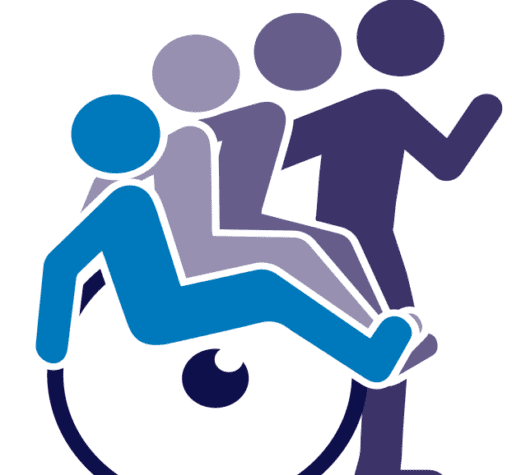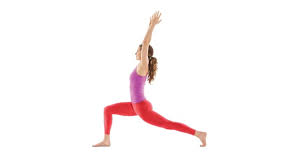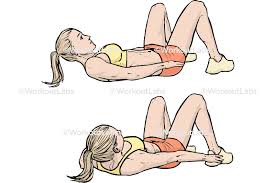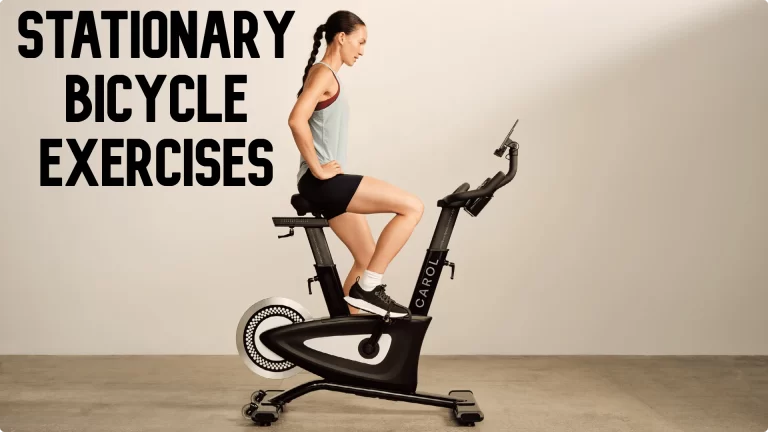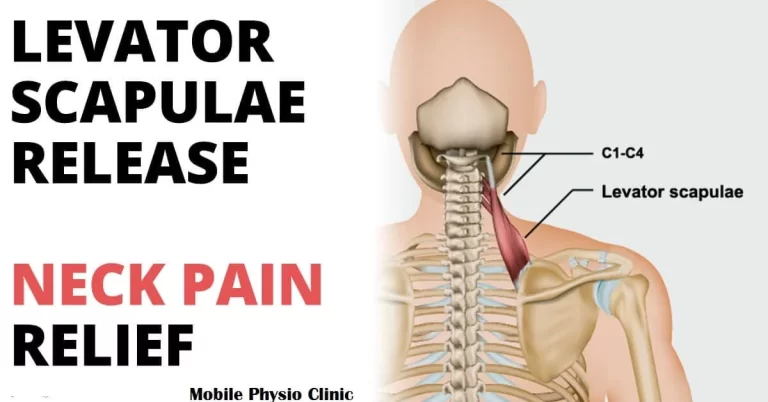9 Best Exercise to Relieve Disc Bulge Lower Back
Disc bulge, also known as a herniated or slipped disc, can cause lower back pain, stiffness, and nerve irritation. Specific physiotherapy exercises can help reduce pressure on the disc, relieve pain, and improve mobility. These exercises focus on spinal extension, core stability, and gentle stretching to support healing and prevent further injury.
Researchers think that 619 million individuals globally suffered from back pain in 2020, and by 2050, that number is expected to rise to 843 million.
One possible reason for lower back pain is difficulties with the discs in the lower back, including disc bulges.
Table of Contents
What is a disk bulge?
A herniated disc occurs when one of the discs in your spine (backbone) ruptures or leaks as a result of normal wear and tear or trauma. Compression of the spinal cord and irritation of the nerves cause weakness, numbness, and pain.
From the base of your skull to your tailbone, your spine is composed of many bones called vertebrae. There are rounded cushions called disks between your vertebrae. You can move and bend easily because the discs act as cushions between your bones. The disks lose their efficiency with time and may start slipping around. The term “herniated disk” describes this condition.
A herniated disk is also known as:
- Bulging disk.
- Slipped disk.
- Ruptured disk.
- Protruding disk.
An estimated 3 million Americans get a herniated disk each year. Tumors in the neck, back, and legs are frequently caused by protruding disks. While they can appear anywhere on your spine, they typically begin in your neck (cervical spine) or lower back (lumbar spine). The thoracic spine, or upper to mid-back area, is rarely the site of a herniated disc.
Causes of a Bulging Disk
Your spine’s discs look like a jelly doughnut, with a soft, gel-like inside and a harder outside. The outer layer deteriorates with time and might rupture. A herniated disc happens when the “jelly” fluid inside the disc pushes against your spinal cord after leaking through the rupture. Herniated disk symptoms might result from the leaking material compressing surrounding spinal nerves.
There are several reasons why a disc may rupture. Some causes of herniated disks are:
- Aging
- traumatic injuries, such as falls.
- Performing repetitive twisting or bending movements.
- incorrectly lifting heavy items.
- Obesity
Risk factors for a slipped disk
People aged 30 to 50 are more likely to have herniated discs. Furthermore, the illness often runs in families. Other risk factors consist of:
- Smoking.
- Being obese or overweight.
- being diabetic.
- suffering from a connective tissue disease.
Symptoms of Disc Bulge
The cause of “sciatica” pain is frequently a herniated disc in the lower back.. A severe pain that frequently radiates down one leg, foot, or side of your buttock. Additional signs of a slipped disk in your lower back might be:
- pain in the lower back.
- Tingling
- Numbness
- Weakening of the muscles.
Best Exercise For Disc Bulge
- Cobra Stretch
- Cat-Cow (Camel) Stretch
- Bird Dog Stretch
- Plank
- Knee to Chest
- Back Flexion
- Piriformis Stretch
Cobra Stretch:
- Start the workout by lying on your stomach and gently raising yourself up on your elbows while maintaining a hip-to-floor position.
- Return to the prone pose( lying face down) after holding this position for ten to fifteen seconds.
- Perform this stretch up to 10 times, gradually increasing to holding the end position for 30 seconds.
- Try rising onto your hands rather than your elbows to make it even easier.
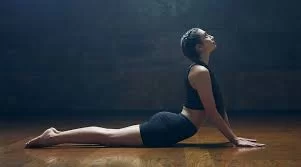
Superman Exercise:
- As you lie on the floor in a prone (face down) position, place your arms out in front of you and your legs straight.
- Contract your glutes, core, and the muscles between your shoulder blades all at once.
- To work your abs, attempt to raise your belly button just a little bit off the ground.
- Imagine yourself as Superman, flying over the skies, to visualize this.
- Hold for two to three seconds. Throughout, keep your breathing steady.
- relax. You should do eight to twelve repetitions in two or three sets.
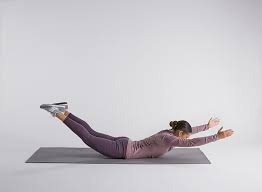
Knee To Chest:
- You should lie on your back.
- Your legs bent.
- Stretch your leg towards your chest with both hands behind one knee.
- Change legs and perform five repetitions on each leg.
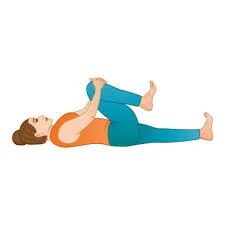
Straight Leg Raise:
The straight leg lift is initiated by
- Bend your legs and place your heels on the floor while lying on your back.
- With your non-injured leg flat on the floor, curve its knee to a 90-degree angle.
- You can stabilize the muscles on your straight leg by contracting your quadriceps, which are the muscles on the front of your foreleg.
- Breathe deeply, then lift the straight leg six inches off the ground.
- Wait three seconds.
- Relax and repeat ten times more.
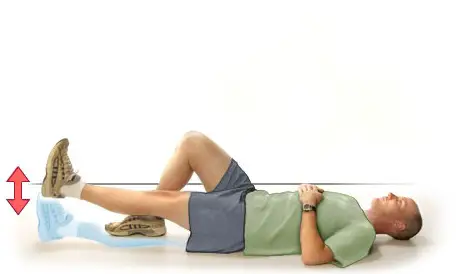
Bridging:
- By squeezing your lower back against the floor, you may tighten your buttocks and abdomen.
- Elevate your hips so that your knees and shoulders form a straight line.
- Pull your stomach button back toward your spine while contracting your core.
- Hold for 20 to 30 seconds.
- Return to your starting posture by lowering your hips.
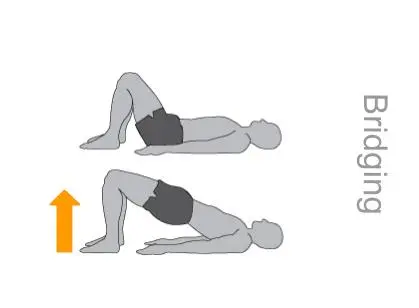
Cat-Cow (Camel) Stretch:
- Begin by lowering yourself to your hands and knees for this stretch.
- Take a breath, look up at the ceiling, and allow your stomach to” drop” to the bottom.
- Exhale, then slowly round your spine, pushing your hands into the bottom and bending your neck slightly to look at your base.
- Perform two or three sets of 10 repetitions.
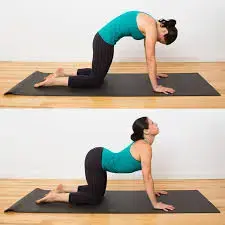
Bird Dog Stretch:
- To begin, position your knees behind your hips and your hands behind your shoulders.
- Your left arm should reach forward until it is parallel to your body. Push your right leg backward until it’s in line with your torso.
- Hold this stance for two to three seconds before slowly returning to the starting position.
- Do 10 repetitions x 2- 3 sets on the other side.
- Make sure your head, neck, and back are all in a neutral position to reduce neck strain.
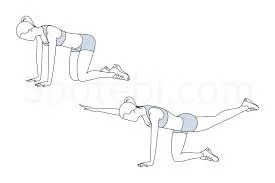
Plank:
- Begin by lying on your stomach.
- Keep your forearms on the mat
- Squeeze your core while keeping your forearms and toes in a comfortable position.
- Try to maintain the plank posture for at least 10 seconds, but aim for 20 to 30 seconds.
- Go for five to ten repetitions.
- Increase the intensity by holding the plank for longer periods of time( 10 seconds at a time) when you are ready.
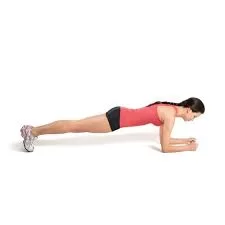
Piriformis Stretch:
- Bend your knees and place your heels on the ground while resting on your back.
- You should cross one leg over the other so the ankle relaxes on the bent knee.
- Pull the crossed leg slowly towards the chest until the buttocks feel stretched, then hold it for 10 to 15 seconds.
- For three rounds, repeat on both sides.
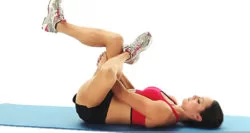
7 Best Exercises for a Disc Bulge Video
How can exercise help?
Exercise and physical therapy are routinely used in the recovery process for herniated disks. A doctor would often advise limiting activity for two to three days, although bed rest is not advised.
By engaging in mild workouts and activities, you may strengthen the muscles supporting your spine and lessen the strain on your spinal column. They may also reduce the chance of a herniated disk reoccurring by increasing spine flexibility.
A doctor may suggest starting out cautiously and progressively increasing the amount of activity. During rehabilitation, they will discuss which workouts are appropriate and which are not.
Exercise that helps to reduce a herniated disk:
- swimming
- yoga
- walking
- cycling.
When performing any workout, take your time and be flexible, especially when lifting or bending. They shouldn’t cause pain. A person should consult their physician and stop exercising if they have any pain.
Exercises to avoid
Exercise that is too demanding should be avoided when recovering from a herniated disk. Any exercise that hurts or causes additional pain should be avoided by people. High-impact sports like martial arts or jogging may be something people want to stay away from.
The best method to lessen symptoms is to start out slowly and increase your level of exercise intensity. Early stretches and exercise might also help someone get better results. To choose the ideal fitness program for their needs, a person should see a physician.
Summary
Herniated or slipped disk pain and pressure can be reduced by performing mild stretches and exercises. Pain and recurrence can be avoided by strengthening the back and hamstring muscles, which relieves strain on the spinal column.
To be sure that workouts won’t harm your back or result in further pain, always see a doctor before beginning any new ones. The exercises that each patient should perform will depend on where their herniated disc is located.
FAQ’s
A person with a herniated disk should limit their activity for two to three days, according to the American Association of Neurological Surgeons (AANS). However, if walking does not result in more pain and a person feels comfortable doing so, it is recommended.
Stretching exercises are part of physical therapy that doctors may prescribe to treat a herniated disk. However, this needs to be done carefully and with a healthcare provider’s supervision.
There are a number of things that might make herniated disk pain worse, including:
incorrect posture,
improper lifting of heavy objects.
Sudden or excessive twisting movements.
being overweight.
prolonged sitting.
References
- Fensome, H. (2023, June 13). Lower Back Disc Bulges – The 8 Best Exercises to help you with your low back pain. Health First. https://www.healthfirstosteopathy.co.uk/post/2019/06/06/lower-back-disc-bulges-the-8-best-exercises
- Barrell, A. (2024, October 1). Safe exercises for a herniated disk. https://www.medicalnewstoday.com/articles/324311#summary
